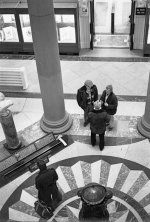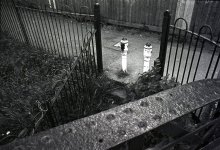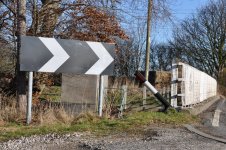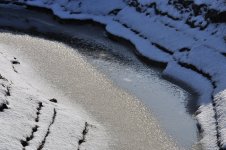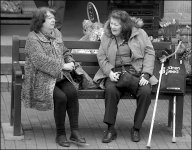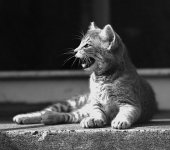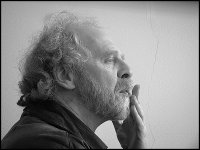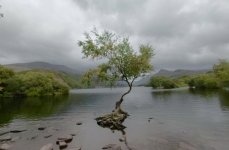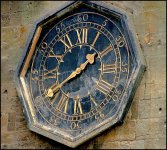I often see photos that I like along the lines of Jem Southam's work where the photo is apparently just what was in front of the camera at the time. I'm sure that is not the case and that they have been carefully composed and a lot of thought has gone into them but there has not apparently been an effort to get up at dawn or or wait for blue skies and fluffy clouds, you know the sort of thing.
I still suffer from single image syndrome (less so nowadays), and have always struggled with Jem Southam's work, and similar, as individual images haven't felt "special" enough to warrant his reputation.
There are several things that have forced me to rethink. As you mentioned, with more careful study, many apparent snapshots have had a great deal of thought put into them, and secondly, having listened to Jem discuss his work, it changed the way I looked at and assessed it. Behind much of this kind of work is a clear intent and purpose, which, while not always essential to know about, can make a crucial difference to understanding and appreciating it
But when I go out snapping I invariably do not come back with those photos, in fact I often see those scenes and reject them as things I want to shoot. As a result I have been pondering why? Why when I like that kind of photo don't I shoot them and I think I have come to two conclusions, firstly they don't seem difficult enough, with a modern digital camera they are really just point-and-shoot shots. Secondly I don't really think I know how to process them into the sort of image that I really like.
Based on my own experiences, I think this might be through a lack of intent and purpose, something that clearly lies behind Jem Southam's images The difficult bit of photography for me is the visualisation of what I want from the photograph. Digital hasn't made that any easier. This also extends to the processing. I can process a pleasing enough image most of the time, the problem is deciding what sort of image best matches what I want to say, which brings me back to intent and purpose.
As I mentioned in the Documentary thread, I've been photographing the same bit of small woodland since Covid began. It's 500m from my front door, 750m long and between 50m and 150m wide. Before Covid I had driven alongside it, but never walked through it. It's a scruffy bit of woodland, which has reclaimed a site of small scale quarrying, meaning it has very uneven ground with shallow soils and rocky outcrops, and a dismantled railway line along one edge. On average I have walked through it two to three times a week
I've enjoyed my time taking photographs in these woods, but it's been a bit aimless. other than "capturing" the wood through the seasons, and I haven't finalised any images. After the documentary thread, I went back to the wood with a new purpose. I now wanted to try and say something about the relationship between the woodland and the quarrying, and to say something about how nature had reclaimed the old railway line.
In some ways this has made the photography more difficult, as I have a clearer measure of "success or failure" than before, but equally, the clearer focus of "why" I am making the photographs has made things easier, both in the taking and processing. I am still taking time over every picture, but I could easily get away with a point and shoot approach as I have clearer idea of what I want to point at.
Although, I'm still not sure how it needs processed, and its 5 shot pano (not a snapshot), the picture below from yesterday shows a rocky outcrop, a fallen tree (shallow soils) and the scruffy chaos of the woodland, so although I don't see it going on my wall, it says more about this woodland than some of the prettier and more "location independent" pictures I've taken. Although, this is still my first working proof, I get the feeling that getting a final image I'm happy with is going to be easier than usual because the image has a more clearly defined purpose. At least, this is what I am thinking at the moment.
Thoughts please? Do you take photos that emulate styles that you enjoy viewing by others or do you just do your own thing and are happy enough with that?
I look at lots of photographs from many genre, and listen to talks from, and about, many different photographers, as well as reading about photographers. I can't see how it's possible for me to have remained uninfluenced by their work, and for some of this to be reflected in my own. But I'm not conscious of ever trying to emulate, or copy, the work of another photographer. I think, on balance, I do my own thing.


